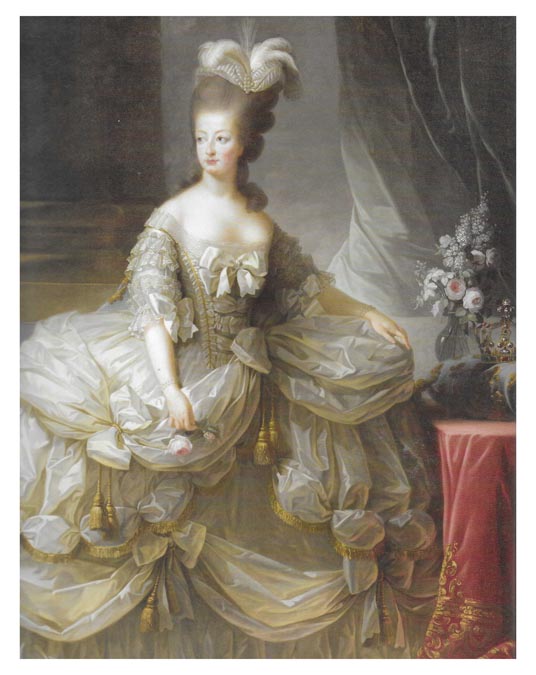

Marie Antoinette was born November 2, 1755 as an Archduchess of Austria and became dauphine of France at age 14 upon her marriage.
And on May 16, 1770 she was joined in marriage with the heir to the French throne, the future King Louis XVI in the Royal Chapel at Versailles. It was a political marriage designed to seal a new alliance between two former enemy states. The Mercure de France wrote that she “smelt of springtime.”

The new princess was greeted in triumph. The princess was “giving superb bouquets of flowers. Nothing can describe her radiant complexion, a most perfect mixture of the lily and the rose,” wrote the Baronness Oberkirch. May 10, 1774 her husband ascended to the throne as Louis XVI and she became queen.
After eight years of marriage, she started having children. She became increasingly unpopular among the people. During the French Revolution she was known as Madame Deficit because the country’s financial crisis was blamed on her lavish spending. During the Revolution the government placed the royal family under house arrest in the Tuileries Palace in October 1789.In 1792 the monarchy was abolished. Louis XVI was executed by guillotine January 21. 1792.
The queen spent heavily on fashion, luxuries and gambling. Her bearing and appearance was very majestic and charismatic and she represented the court with her grace and demeanor. Due to the high price for flour and bread, when she was informed that the peasants were starving and had no bread, she supposedly said “Qu’ils mangent de la brioche,” as brioche was a luxury food rich in butter and eggs. However, historians doubt the queen ever said this queen.
Her garden, the Petit Trianon, was her refuge from the world. The Petit Trianon was originally designed as a pleasure pavilion for Louis XV and his favorite Madame de Pompadour. Marie wanted to set a new style and was eager to create a setting for country walks and activities, reflecting her personality of charming, modern and original. The cost was seen as excessive which were judged to be 300,000 livres for the first tranche of work alone.
Each year the queen found new ways to embellish the natural beauty of her beloved Trianon, the paradisial playground she adored. The Temple of Love was set in the dappled shade of two weeping willow trees in the middle of an island planted with paradise apples, roses, and lilacs. She installed a theater, the Belvedere, which was completed in 1782 and became a cool shade of simple Romanesque architecture.
The queen fantasized about the delights of nature and claimed to have “green fingers.” The Trianon “reflected her innermost soul, her true identity.” She took a close interest in rare exotic species and learning the language of flowers. The queen’s favorite flower were violets. Roses were another passion. Tulips in the Spring and camellias, Japanese pagoda trees, Persian lilac, exotic oaks, even a Virginia tulip tree graced her garden.
It was here that she entertained her friends, screened from eyes by thick greenery, the “loveliest dinners, concerts, the dances of Graces used to take place. Sofas and chairs were upholstered with the handiwork of Marie Antoinette. The roses embroidered by her seemed to be lovelier than those of nature.”
Marie Antoinette’s trial began October 14, 1793 and she was convicted two days later of high treason and executed by guillotine. She was 37 years old.

